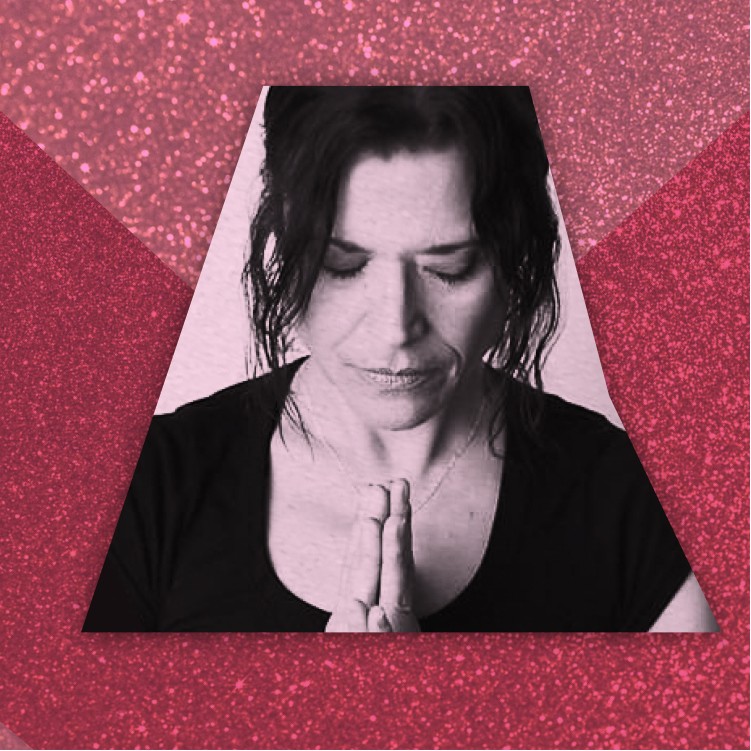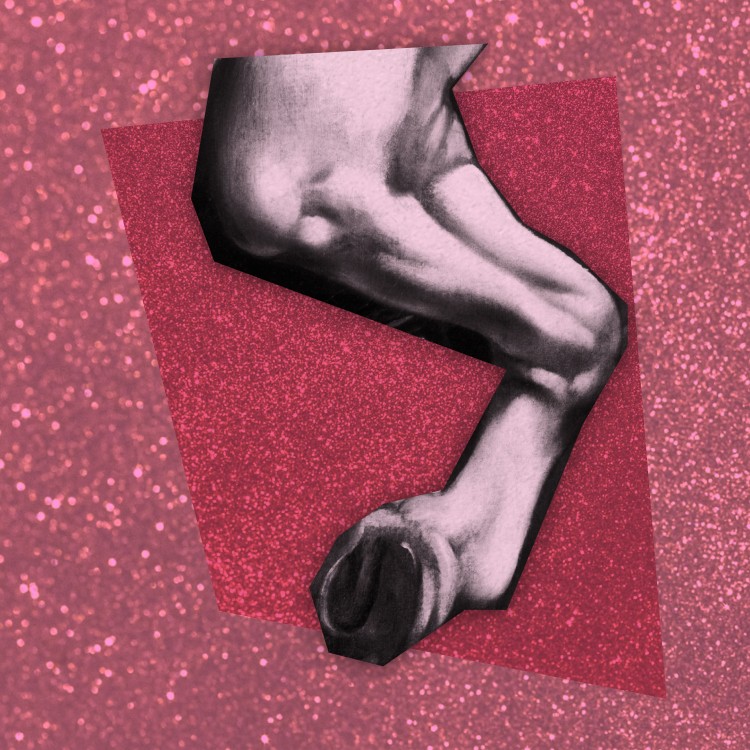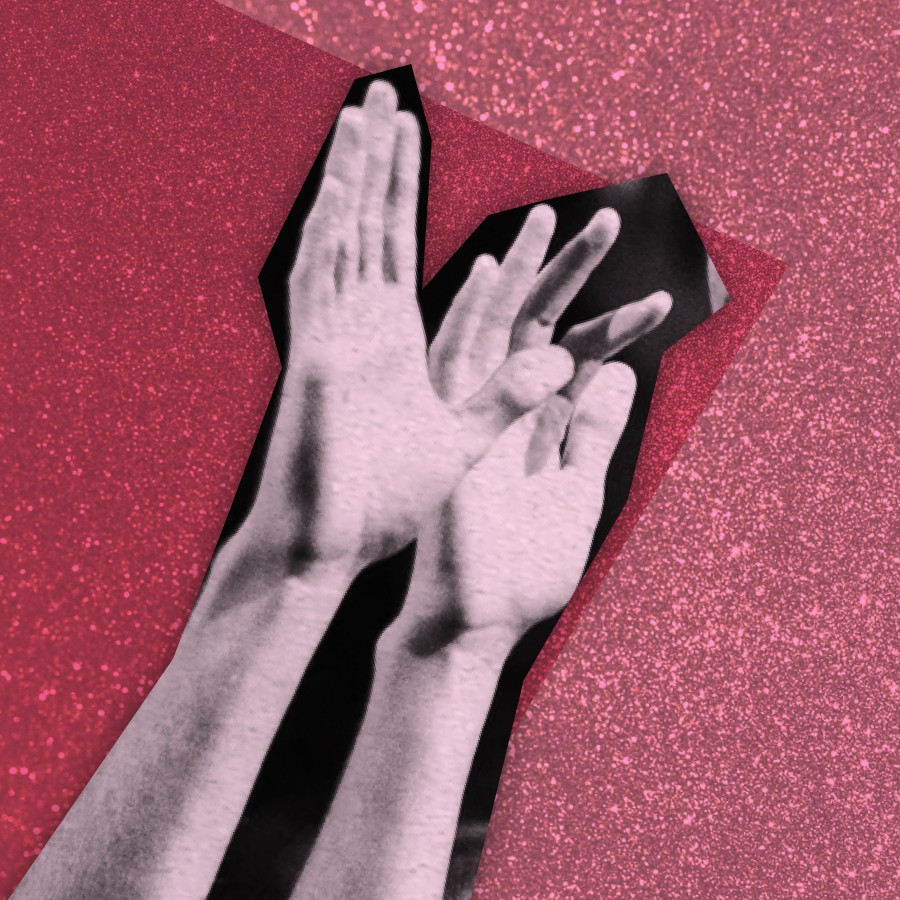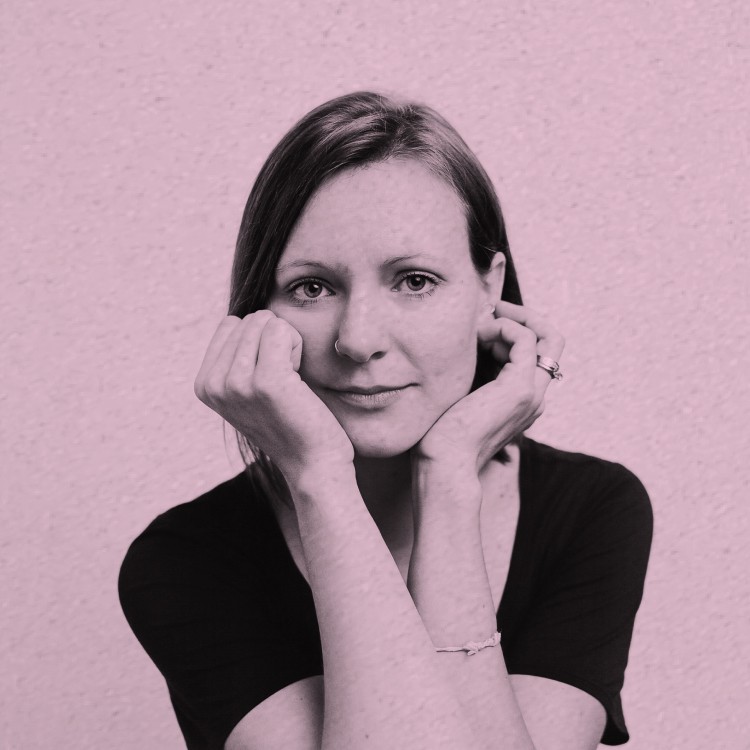Judo
Through their spiritual mentors, Alana and Simon are introduced to Conversion Therapy. A deep dive into the psychological & theological theories behind this practice.
Part 4 • 45:25
Dear Alana, is available free on all platforms and as an exclusive ad-free binge for Tenderfoot+ subscribers. To sign up or learn more, visit Tenderfootplus.com.
Transcript
The following episode contains references to suicide. If you or someone you know is in need of help, please contact the Suicide and Crisis Lifeline by dialing 988. Listener discretion is advised.
[“Interlude,” by La Chica]
SIMON KENT FUNG: After Fr. Dave is reassigned, Alana gets even more involved with her church, St. Tom’s. As Joyce remembers it, the church invites a licensed therapist, a woman named Kate, to offer low-cost therapy to students. Alana, who’s 19, eagerly signs up.
ALANA: “When I first met Kate I was shaking. I was desperate, I was nervous. She stared at me blankly yet attentively. I couldn't speak. ‘I'm sorry, I'm so nervous.’ ‘Don't be sorry, I know it's hard, I’m a stranger.’
But she wasn't a stranger…She [had] the aura of a mother. My mother. I wanted her to help, catch my tears and collect them, keep them tucked away deep into her bosom. I felt deep shame. I could barely get the words out: ‘I struggle with same sex attraction.’ [She] asked… ‘If God could take away your same-sex attraction, would you ask him to?’”
SIMON KENT FUNG: From Tenderfoot TV, I’m Simon Kent Fung. And this is Dear Alana.
Part Four. Judo.
I moved to New York City after college. To work at a Catholic media company, and intern at a faith-based NGO that lobbied at the UN. Looking back, I was such a different person then, but in some ways, I haven’t changed at all. I was trying to find work that would help bring the world closer to God. But the other reason I headed to the Big Apple—the one I didn’t say out loud—was to find a therapist who could help me with my same-sex attractions. Unlike Alana, whose therapist kind of fell into her lap through St. Tom’s, I had to look a little harder.
On the note that Fr. William gave me, when he told me, “These people will, quote, ‘fix you,’” he wrote down the name of a website. That website was NARTH.com, which stood for the National Association for Research & Therapy of Homosexuality. It was the leading organization in the 90s and mid-aughts that promoted sexual orientation change efforts—what we now call conversion therapy. What Fr. William didn’t know was that I’d already been to NARTH’s website a thousand times before. I’d read every page.
JOSEPH NICOLOSI: We believe that homosexuality is a symptom of early childhood trauma. We get the client to address those traumas, and they will experience a diminishment in their same-sex attractions.
SIMON KENT FUNG: That’s Joseph Nicolosi, one of the founders of NARTH, who I’ll talk about later. Before I go any further, I want to make it clear that all of my experiences with this kind of therapy were self-initiated. Not even my parents pressured me to do it. And while obviously I was influenced by my church, by the time Fr. William told me to get help, I’d already gone through dozens of websites and books on the subject on my own. He merely confirmed what I was already determined to do. To be “fixed.” Because now, my vocation depended on it.
You see, I couldn’t be a priest if I kept having these tendencies. In 2005, the Vatican published its guidelines on seminary admissions. In it, they emphatically said that those with deep-seated homosexual tendencies should not be admitted. Only if you grew out of this quote “transitory problem” could you join. In practice, many gay men lie and become priests anyways. But I didn’t want to cheat. I wanted to follow the Vatican guidelines, and get over this quote “transitory problem.” How was that gonna happen? Thankfully, there was a solution: conversion therapy.
Conversion therapy refers to the controversial practice of trying to change, or convert, one’s sexual orientation: to go from gay to straight or gay to…less gay. It can look like many different things: psychotherapy, healing prayer, even twelve-steps. And it’s not always blatantly coercive.
JOSEPH NICOLOSI: We are allowing people to be who they want to be. We’re not imposing. We’re not forcing people to change. We’re just exploring.
SIMON KENT FUNG: Again, Joseph Nicolosi, using the free will argument to defend the practice. When some people hear the term conversion therapy, they may think of forced, gruesome practices like electroshock and lobotomies. Those practices certainly existed, but conversion therapy today looks a lot different. And both Alana and I pursued it to follow what we felt was God’s will.
ALANA: “The reason I sought out therapy…[is because I need] to get this under control if I want to be a nun or a wife.”
SIMON KENT FUNG: Conversion therapy today is also a lot more common than you’d think. An estimated 70,000 youth in the US will go through some form of conversion therapy before they turn 18. And a big reason why it’s still happening is because, as you’ll see for Alana and me, it can be compelling to a young person who’s desperate to change.
So it’s 2008, and I’m in New York City. It’s the middle of the Great Recession. And I’d just saved up enough to be able to afford to see a therapist for the first time. But who could help me? I couldn’t just walk into any therapist’s office. I wanted to be fixed, not encouraged. And I knew that most therapists would be affirming of my sexual orientation, and wouldn’t agree to help me change it. So I was kinda scared. What if a therapist tried to steer me in a direction that went against my faith? Luckily, I found someone. He was the go-to Catholic therapist for conservative Catholics in the Tri-State area (even Mother Teresa sent her nuns to see him). On his website, he explicitly embraced the teachings of the Catholic Church, and also talked about the work of NARTH in one of his interviews, so he passed my litmus test. I eagerly scheduled an appointment.
In our first session, I sat across from him in a worn leather armchair in his dim Manhattan office. He was heavyset and in his mid-forties and spoke with a kind of Jersey confidence. My palms were sweating. He asked me about my relationship with my father. If I’d grown up with a strong role model who roughhoused with me and told me I had what it took to be a man.
“No,” I said. My dad was your typical Asian dad. Kinda distant and strict, non-confrontational, always busy with work.
He nodded. He asked me if I ever felt distant around other boys growing up.
“Yes,” I said. I’d been bullied and didn’t have many friends, boys or girls.
He asked me about my body, and if I felt disconnected from it in any way.
“Well, yeah, there were many things I hated about my body.”
He then asked me what I wanted.
“I don’t want to have same-sex attraction anymore. Is this something that you can help me with?”
He nodded.
The idea of treating homosexuality goes back well over a hundred years. The original term “homosexual” was defined squarely as a disease. And this idea that gay people were sick in some way, dominated the public consciousness well into the 60s.
ARCHIVAL TAPE: What Jimmy didn’t know was that Ralph was sick. A sickness that was not visible like smallpox, but no less dangerous and contagious. A sickness of the mind. You see, Ralph was a homosexual. A person who demands an intimate relationship with members of their own sex.
SIMON KENT FUNG: A dangerous and contagious sickness. With this fear in the air, it’s no surprise that in 1952 the American Psychiatric Association, or the APA, listed homosexuality as, well, a mental disorder.
And what do you do with a mental disorder, a sickness, a disease? You try to cure it.
ARCHIVAL CLIENT: So what am I supposed to do now?
ARCHIVAL THERAPIST: You start masturbating with your homosexual image. But at that point of inevitability, switch over to the female picture. And maybe nothing will happen, maybe you won’t have a climax. But you probably will, and I wanna know about it.
SIMON KENT FUNG: Gay people became guinea pigs. Scientists experimented with everything, from shock and hormone therapies to testicular transplants, hysterectomies, and institutionalization. Behavioral psychologists gave clients nausea-inducing drugs while playing audio of gay sex. They tried all kinds of things.
But the biggest influence on conversion therapy came at the turn of the century, from Sigmund Freud. In short, his theory was that our psyches were shaped by our childhoods and our parents. And his contemporaries were fascinated by the prospect of using his psychoanalytic techniques to uncover how childhood traumas and parenting patterns might hold the key to curing this disease.
IRVING BIEBER: I do not believe that it is possible to produce a homosexual if the father is a constructive father to his son.
SIMON KENT FUNG: That’s Irving Bieber. Together with other New York psychotherapists like Charles Socarides, he posited that homosexuality was caused by a distant father and what he called a close-binding mother. Here he is in a 1968 CBS News documentary.
CBS NEWS ANNOUNCER: Dr. Charles Socarides is a New York psychoanalyst, a clinical assistant professor of psychiatry at the Albert Einstein School of Medicine, here lecturing to a group of resident psychiatrists on homosexuality.
WOMAN: I was wondering if you think that there are any quote “happy homosexuals”?
CHARLES SOCARIDES: The fact that somebody’s homosexual automatically rules out the possibility that he will remain happy for long, in my opinion.
SIMON KENT FUNG: The belief that homosexuality was a kind of illness, compulsion, or parenting disaster, dominated the public.
CBS NEWS: Most Americans are repelled by the mere notion of homosexuality. A CBS News survey shows that two out of three Americans look upon homosexuals with “disgust, discomfort, or fear.” One out of ten says “hatred.” A vast majority believe that homosexuality is an illness.
SIMON KENT FUNG: And this view had a real impact on society. If you were found out to be gay, you’d be fired from your job, face interrogation and jail time, and denied entry into the United States.
CBS HOST: The dilemma of the homosexual. By the law that he is a criminal, shunned by employers, rejected by heterosexual society, a displaced person.
SIMON KENT FUNG: But cracks were beginning to form. By the late forties, research showed that homosexuality was far more common than previously thought. And as the gay rights movement began to take off, alongside the growing consciousness of gay people in society, the APA eventually removed homosexuality from its list of mental disorders—first partially in 1974, and then completely in 1987 (a few years after I was born). For a deeper dive into the fascinating string of events that led to this landmark decision, I recommend the documentary CURED as well as the episode titled “81 Words” from This American Life.
But conversion therapy wasn't just going to go away. Soon a new wave of conversion therapy research and practice would begin. A wave that would eventually come for me.
Alana’s journals inspired me to dig up my own notebooks. I’m looking at my notes from my therapy sessions. I remember being such an A-plus student that I transcribed every session, sometimes sitting in the stairwell after my appointment to write it all down so that I could study it later. I begin my notebook with a prayer.
SIMON: “Dear Lord, this is my new workbook. To work on my SSA and the healing and recovery of my underlying issues.”
SIMON KENT FUNG: SSA. Same-sex attraction. It sounds very clinical but that’s the point. For many Catholics and conservative Christians, “same-sex attraction” is the preferred word for homosexuality, because other words, like “gay” are seen as reductive, political labels used by radical activists to hijack our identities. Instead, same-sex attraction describes a condition, like psoriasis or depression—something a person struggles with but doesn’t fully identify as.
When I first heard the term SSA, I remember feeling relieved. These attractions I was starting to have towards the same sex, didn’t mean I was gay, like those people on the news who were underwear dancing at the Pride parade. Those people scared me. I wasn’t gay, like them. But “struggling with same-sex attraction”? That fit better.
A lot of my early notes document my therapist’s thoughts on the importance of developmental milestones.
SIMON: “Every boy needs to go through certain stages when he's young: first, looking up to a strong and loving father, and being told by that father that he has what it takes to be a boy, to be a friend, to play sports, et cetera. Then to fight, to train, to test, to lead. Then beauty and attraction eventually to a woman. And lastly, to be a wise counselor. What steps you missed out on, you can't skip. We must go back and experience those things.”
SIMON KENT FUNG: And my relationship with my father played a central role in our sessions.
SIMON: “He asked me to think about the father I wished I had as a boy. That little boy, inside of me, who longs for his dad, he’s still there. Together, my therapist and I will go and find that boy and heal him.”
SIMON KENT FUNG: There was a lot I wished was different about my dad. He was gruff and emotionally distant. I was sensitive. We butted heads. I criticized him a lot. He once locked me in the garage when I wouldn’t finish my supper. He was always working or sleeping.
When my therapist asked me if there was a moment growing up when I felt the least connected to my dad, one memory stuck out.
When I was five or six, my dad was obsessed with teaching me how to swim. We signed up for parent-child swim classes at the community center. But, I didn’t want to go. It was cold (it was wintertime). The change rooms smelled. And I would cry as we drove to the pool. When it was time for the class to begin, I freaked out. My dad commanded me to get into the water with him. But I shook with fear, and cried bitterly. “I can’t, I want to go home!” The more I cried, the angrier he got. His eyes burned with fire, and he’d pull me into the pool. All I remember as I entered the water, was this primal fear. This sense that I was going to die. I gripped onto my dad who pushed me away so that I could get used to floating. But the panic took over, and I don’t know how long this went on for. When it was all over, and we were getting changed, my eyes raw from tears and chlorine, my dad wouldn’t talk to me. His silence conveyed both embarrassment and frustration. And I dreaded the following week when this would happen all over again.
“You needed him to protect and encourage you,” my therapist said. “But he didn’t. This was a father wound.” A wound we must heal.
It felt so good to be able to talk about my childhood with someone. And all of these ideas from my therapist connecting trauma to my sexuality were really compelling to me. They weren’t your typical pray-the-gay away approaches (though many people still encounter those). Nor were they premised on the outdated idea that being gay was a choice. Instead, these theories seemed really psychological, and appeared to map directly to my life.
The person most responsible for bringing a level of sophistication to conversion therapy was this woman, named Elizabeth Moberly. In the 70s, while all the drama at the APA delisting homosexuality was going on, Moberly, a quiet, bookish woman who’d just graduated from Oxford, decided to do some research on homosexuality. A lot of her friends in the theology department were gay, and she wanted to better understand them. Here she is speaking at a 1998 conference organized by Fishnet Ministries.
ELIZABETH MOBERLY: I believe that homosexuality, derives not from genetic or hormonal causes. I believe it is linked with difficulties in the early relationship with the same-sex parent. The parental identification is particularly conspicuous in a lesbian relationship. Typically, there is a search for a mother figure, even if this is unconscious. So really the lesbian partnership has the character of a mother daughter relationship.
SIMON KENT FUNG: Moberly cites this unresolved attachment to mom and dad as the underlying need that the homosexual is subconsciously trying to resolve. Those unmet love needs, she thinks, get transferred to a same-sex partner that the child will seek out later in adulthood. The way my therapist described it to me was that at puberty, my need for my dad, got eroticized.
But she goes further.
ELIZABETH MOBERLY: Same sex-love is not a deviation from normality, but an attempt to resume and continue the normal developmental process. It's not an abnormal sexual drive. It's a normal developmental drive...a reparative drive. A reparative attempt to make good developmental deficits.
SIMON KENT FUNG: She theorizes that by finding a same-sex lover, the homosexual person is subconsciously repairing a deficit in same-sex love that they never got from their parent. Like a body trying to heal itself.
I remember being drawn to Moberly’s reparative theory because she seemed to be suggesting that my attractions weren’t bad. In fact, Moberly spends a good part of her talk scolding religious people for demonizing same-sex attractions that she says are, at their root, perfectly valid. And then she says something counter intuitive.
ELIZABETH MOBERLY: Same-sex love is not the problem, but the solution. Not the problem, but the solution. I really do think it’s essential to get that person into therapy where they can get a more intensified and focused experience of same-sex relating with somebody who is already fulfilled and secure in their own same-sex, heterosexual identity.
SIMON KENT FUNG: Moberly’s belief is that the way to heal this same-sex love deficit is through same-sex connection. The non-erotic kind, like when we were kids. By working with a straight therapist of the same sex, the homosexual can be healed of these mother or father wounds, have their childhood needs met, and naturally become straight.
At the time, this all sounded plausible to me. Her theory seemed to explain so much of my childhood. I didn’t have a great relationship with my dad. And others who’ve since extended Moberly’s work have broadened the childhood trauma theory to include not just the role of parents but also peers. Given that I was bullied for so long on the schoolyard, that totally checked out too. I never questioned whether maybe my experiences were actually quite common for a lot of kids. I was just happy to have an explanation for my SSA. And by working with my therapist, I was determined to heal these wounds and resume my developmental journey towards heterosexuality.
At the end of Elizabeth Moberly’s talk, she takes questions from the audience.
MAN: My question is, granted that I really believe the whole framework and everything you've been telling us makes such sense psychologically. But I want to know: What are the bottom line results? How many people? Can you give us percentages? Can you give us figures? Can you give us some kind of hope that no matter that, that—
ELIZABETH MOBERLY: I can give you a hope, but I can't give you a headcount. Sorry. [laughs]
MAN: I'm looking for, I love the idea, but I need the results. You see, I'm screaming for, for, gee—
ELIZABETH MOBERLY: You go out and use these principles and you come back and you give me your head count. [laughs]
SIMON KENT FUNG: The reason Moberly can’t answer this question is because she was never a clinical practitioner. She’d never tested out her reparative theory on actual patients.
But others soon would.
In the late 80s, once homosexuality was no longer officially considered a mental disorder, practitioners who’d spent their careers trying to treat homosexuality were outraged. They called the APA’s decision, a quote “destructive and blind pursuit of political correctness.” And so, Charles Socarides (a Catholic), and his colleagues Joseph Nicolosi (also Catholic, who you heard at the beginning of this episode), and Benjamin Kaufman (who was Jewish)—the three of them got together and started NARTH, the National Association for Research & Therapy of Homosexuality. They published their own research, and started to bring Moberly’s ideas into clinical practice.
The establishment of NARTH injected new life into the conversion therapy movement. Joseph Nicolosi would appear on news shows and Dr. Phil, partner with Focus on the Family, and advise Catholic and Christian ministries on all things gay.
NEWS ANNOUNCER: Coming up, he claims he’s reversed homosexual tendencies in hundreds of his patients through therapy.
JOSEPH NICOLOSI: I have the belief that all people are heterosexual in their nature, and that a particular trauma creates the homosexual condition.
SIMON KENT FUNG: And they came up with a term that described their techniques. They called it “Reparative Therapy”—you can see now where that comes from. In fact, Elizabeth Moberly would later claim that Joseph Nicolosi took credit for her ideas and they publicly feuded over it in the literature. From the 90s onwards, it was this kind of Reparative Therapy that captivated many religious therapists, like mine, eager to combine Church teaching with psychology.
Since I had SSA, I’d clearly missed out on the rites of passage that fathers normally give their sons—the sorts of interactions that secured a sense of masculinity. So my therapist would be stepping in to play that role. He would become a sort of surrogate father to me.
SIMON: He said, I'm “intelligent, articulate, blessed with many artistic gifts, and these are good. But we need to work on my masculinity.”
SIMON KENT FUNG: For the next year, my therapist would teach me about how men move their bodies and take up space, how men insult each other as a way of bonding. We practiced what he called verbal judo so that I could learn how to spar with words and insult other men. We role-played situations from my childhood where I was bullied and he had me fight back and tell my bullies off. It wasn’t easy, and honestly, it felt a little awkward at times. But I took it all very seriously. There was no shortcut to growth.
SIMON: So it looks like we had a few months focused on inner child healing. And this is a letter I wrote to myself as my inner child: “Dear Big Simon, I want to tell you about a big hurt. For the longest time, I felt insecure and not confident playing Red Ass at recess.”
SIMON KENT FUNG: That’s a game we used to play in elementary school, where we’d have to throw a tennis ball against a wall and if you missed you’d get a letter until it spelt “RED ASS,” at which point you’d lose and have a ball whipped at your ass.
SIMON: “I always dreaded throwing the ball from far away, because I can't throw that far. I remember running to the wall to not get a letter, and then I slipped on a patch of ice and smashed my face against the brick wall. My glasses were destroyed and I was bleeding. For weeks, I had a nasty scab on the right side of my face, and the other boys teased me and shunned me even more. I remember feeling so alone and sad and so numb. No one cared. I wanted to hide at home. I think this was the last straw that made me give up on ever fitting in. From now on, I just have to figure it out by myself.”
SIMON KENT FUNG: To repair some of these same-sex masculinity wounds around sports, my therapist encouraged me to take up a sport. I chose judo. Maybe because of all the verbal judo we were practicing. But also because I thought it looked cool. So I gave it a shot.
I showed up at the dojo and they paired me up with someone at my skill level (which, for me, meant the 11-year old boy or the middle-aged woman—those were my options). Week after week, I’d get thrown on the mat, get up, and get thrown again—it’s something you had to get used to in judo. One time, I dislocated my toe. Some days, I’d throw up from nerves.
And the guys there? They were, like, comically attractive. Like, why are all of the men in judo so good looking?
SIMON: So he says, “When the attraction comes, don't fight it. Accept it. There's something behind it. Take a pause and instead of freaking out, ask yourself - Why. What are the hidden, immediate thoughts that come to mind? How do I feel about myself? What do I believe about this person? Do I feel small and weak? Do I think he has a better body?”
SIMON KENT FUNG: My therapist called this the “exotic becomes erotic” theory. Because I was so cut off from my masculinity, I saw men as the “Other.” And that, he said, contributed to their eroticization, since we’re naturally attracted to opposites. So I had to demystify these men by confronting them, platonically. Especially the ones I felt attracted to. Remember, same-sex love is the solution, not the problem.
There was this one guy, Patrick, probably in his thirties, who I felt extremely attracted to.
SIMON: This is an entry about Patrick: “It took a risk, but I started talking with Patrick, asking him where he lives. He offered me a ride. I accepted. Once we started talking, it broke the ice. And what I thought (that he thinks I'm a loser) just didn't seem true. In the car, he said he was into computers as a kid, but didn't stay in it and regrets it (he doesn't even know how to download pictures). He's the leader of his police squad, climbing towers, etcetera. He wants to retire in five years, then open a bar or a hotdog stand. So the mystique is broken. He's a man trying to live just like me, and he seems to like me too. He called me ‘brother’ as I was leaving. Lord, thank you for arranging this.”
SIMON KENT FUNG: I excitedly told my therapist about all of this, and he was overjoyed. He said that this guy wouldn’t affirm me as a brother if he didn’t see masculinity in me. The therapy was working. With time, I believed my attractions would go away.
SIMON: September 18, 2008. I asked my therapist, “How I am progressing?” He said, “You have a high probability to change. Between one and five years. Your SSA is a symptom of a deeper problem. You are a heterosexual man with a homosexual problem.” He told the story of one client who began therapy with him five years ago. Today he's dating.
SIMON KENT FUNG: The idea of dating women made me lightheaded and kind of nauseous. I’d asked women out before, earlier in college, when I was trying to see if maybe, I could make it work. Usually we started out as friends, but whenever we’d get too close, or I felt like she was falling for me, I’d back out. At the time, in the Catholic circles I ran in, this was seen as virtuous behavior, a sign of sexual purity. Restraint was holy.
All that would be required for me to change within one to five years would be to grow into my masculinity.
So I returned every week, hopeful that my day of healing would come.
ALANA: “Kate said that my thoughts and attractions were not bad. But if I acted on them my soul would start to wither away. They said I was making too big a deal out of it. That it wasn’t my true identity. It was only a small part of me. It was just a disorder…I was so confused.”
SIMON KENT FUNG: I’m with Joyce, flipping through Alana’s journals. It’s uncanny how Alana’s reiterating the same conversion therapy talking points that I got from my therapist. I ask Joyce if she knew about Alana’s therapist, Kate, and what was going on?
JOYCE: I remember I went to, I met Kate. I went to the student center where all these kids would meet with Kate and sign up. And they paid. A very short amount, but they paid, you know.
SIMON: Yeah I looked her up.
JOYCE: You did?
SIMON: Yeah she’s a Catholic therapist. She went to the Institute for Psychological Sciences, which is this Catholic psychology program that is run by—it’s started by a religious order called the Legionaries of Christ. And…
JOYCE: They're anti-gay?
SIMON: I mean, they're, they're part of this cluster of many different institutions and organizations that are faithful to the teachings of the Church. Right? So their training and how they are told to counsel people will be within those frameworks.
SIMON KENT FUNG: It’s hard for me to answer her with a definitive “yes” here. Because, the Catholic Church doesn’t see itself as anti-gay people. It sees itself as anti-gay sex, which it considers an elective choice, a sin, something separate from the person. Hate the sin, not the sinner. This is why so much of the guidance I got in the Church was framed as protecting me from going to hell. In the same way that a parent would see denying their child candy for breakfast as the most loving thing to do.
But as I see the confusion that this kind of counsel had on Alana, I begin to wonder if maybe she was right to feel like this didn’t add up. That compartmentalizing our sexuality in this way might be what’s actually wrong.
When Joyce first met Alana’s therapist Kate, she remembers Kate reiterating that, as a therapist, she stands by every teaching of the Catholic Church. But Joyce clearly had no idea what that implied, and didn’t know about the messages Alana was getting in therapy. When I was looking for a therapist, I knew that “faithful to the teachings of the Church” was code for a conservative therapist who would support my efforts to change my sexuality. It was a dog whistle that signaled that they’d likely be open to conversion therapy theories.
In the summer of 2010, I went home to visit my family. We did the usual family barbecues with my grandma and cousins. My younger cousin, Vivian, was home from college for the summer, and we took a car ride, just me and her to pick something up from the store. We were always close, and joked around—she was the comedian of the family. But that day in the car, she was unusually quiet and kinda sullen. I looked over from the steering wheel and asked her what was up. “Nothing,” she said. “Come on, tell me. What’s going on?” We pulled into the driveway. And that’s when something happened that I was not expecting. She came out to me.
I stopped in my tracks. Although her news wasn’t a huge surprise to me, I knew I needed to say something. But how? I had the opportunity to be vulnerable with her in that moment, to share with her my own struggle, but I was too ashamed to admit it. I had worked so hard to get to where I was with my therapy, I was so close to being “fixed,” that the thought of me opening up to her and coming out was not on the table.
I chose my words carefully. “Vivian, you do know that you don’t have to be gay, right?” She looked at me and tears began to fall down her cheeks. “Vivian, there are resources out there. From what I’ve read, homosexuality is a developmental delay caused by some sort of childhood trauma. You don’t have to go down the route that the gay activists want you to go down. There are other options, like therapy.”
Vivian turned to look out the window. She wiped her face. And then she said something I’ll never forget. “You will never understand what it’s like to be me. You can go, get married and have kids, and live your normal life. But I can never have that. And you’ll never know what that’s like.” She got out of the car and slammed the door.
Everything I had been working on with my therapist culminated in him suggesting one day that I bring my dad in for a joint session. My parents have always been supportive of me. When I first came out to them, I brought them to a weekend conference organized by Exodus International, the largest Christian umbrella network for conversion therapy. We attended lectures and purchased all the books at the book table. So when I told my dad that this special session with my therapist could be a major breakthrough for my healing, the key that unlocked everything, he booked a plane ticket right away.
I felt nervous and excited. This was my chance to heal my father wounds and get one step closer towards my goal. On the day of our appointment, we walked up to the building together, pushed the heavy metal doors, and went inside.
“Okay Mr. Fung, thank you for coming,” my therapist said. “So I’d like for Simon to start off by expressing how he feels about your relationship when he was a child.”
I was prepared. My therapist and I had worked for weeks on my father wounds. So I told my dad what was on my mind. How he never supported me in the ways I needed when I was bullied at school. How abandoned I’d felt in the swimming pool. How I often felt caught in the middle when he and Mom would fight. It was hard. And several times, I saw my dad wince.
Then my therapist invited him to respond. My dad had his head down and was thoughtful for a few seconds. And then, he spoke in a way I’d never heard before. He was precise, and direct, and gentle. He said that he knows that he did so many things wrong. That there were more mistakes that I hadn’t mentioned. He said he felt so sorry, and so bad, and had no excuses for any of the pain I went through. He said he was working on all of this, working on himself, now.
I looked at my therapist to facilitate the rest of the conversation. Was there more to dig up? Maybe I could do a verbal judo match with my dad, or have my inner child speak to him. But my therapist had his jaw open. And when he turned to me, he said, “Wow, I’m floored. In all my years of counseling I’ve never seen such humility, honesty and courage.” He said he could only pray for some of these qualities in himself. He said I had an amazing dad.
We ended that session and my therapist said that further father-son appointments wouldn’t be necessary. As I sent my dad off to catch his flight, I was grateful for his honesty and remorse. But I was also kinda disappointed. I thought that there would be more to our sessions. That there would be more to process about our relationship. After what I’d hoped would be a breakthrough, I didn’t feel any different. But a cure still had to be possible. If this didn’t work, what was I gonna do? How would I follow God’s vocation for me? How would I cope? I was determined to be a conversion therapy success story. To not be gay, to be fixed. And over the next five years, I would seek out even more kinds of conversion therapy—from a camp in Central Virginia where we reenacted scenes from my schoolyard in order to help me process my childhood bullying, to group therapy where we deconstructed our sexual fantasies. There wasn’t anything I wasn’t willing to try in order to find that silver bullet.
Alana was also willing to try anything. From her records, we know that she belonged to a Catholic support group for people with SSA. I remember hearing about this group growing up. They’d meet regularly in church basements, and somehow the timing never worked out for me to go to their meetings, which were structured around treating homosexuality as an addiction—another popular theory. As the stigma around homosexuality began to fade after the APA’s decision, Catholic psychologists started professional groups like NARTH, and Catholic clergy started ministries. Fr. John Harvey, a moral theologian who was teaching in DC at the time, founded what would become the largest and only Vatican-approved Catholic ministry for the same-sex attracted. A ministry known as Courage International.
FR. JOHN HARVEY: It’s an organization for the purpose of helping people with same-sex attractions to lead chaste lives. And we use the twelve steps of AA with permission of them. The dynamics is the same.
SIMON KENT FUNG: On the St. Tom’s community bookshelf, the two books about homosexuality are by Fr. John Harvey. In his interviews, Fr. Havey insists that his group, Courage, is not therapy. It’s a ministry, it’s the Church ministering to the individual. But the more I listen to him talk about his books, like in this interview a year before his death on the EWTN Bookmark talkshow, the more I’m not so sure.
FR. JOHN HARVEY: That wonderful chapter on one of the greatest psychologists in this subject. Her name is Elizabeth Moberly. She’s been quoted all over the place by Protestants, Catholics, Jews. So I got a hold of that. And I even visited her…over in England. She knew every word I put down. And every word there is her words, I’m just summarizing her thinking.
SIMON KENT FUNG: His books contain Moberly’s theories, essentially, verbatim. He rhymes off her theories.
FR. JOHN HARVEY: Relationships from parents, teenage relationships with peers, you know, an overweaning mother. These are all very important factors.
SIMON KENT FUNG: The host asks him whether people can truly be “cured” from same-sex attraction.
DOUG KECK: Or must they live with it for the rest of their lives? And what about we’ve heard about this, I think Nicolosi usually, Reparative Therapy?
FR. JOHN HARVEY: Reparative Therapy is a good thing. It really flows out of the teaching of Elizabeth Moberly. It’s the idea that if something's wrong, you can repair it. And what is wrong, is attachment to the other sex, same-sex attraction. You can work your way out of it, you know.
SIMON KENT FUNG: “I can work my way out of this,” I told myself. I had to. How else would I become a priest? That guy’s not hot. He’s just a reflection of my underdeveloped masculinity. And It’s just a temptation, anyways. Something I can learn to disassociate from. Or is it more like a disease? Or maybe an addiction like gambling or alcohol? I was holding all of this in at once, and I think Alana must have felt this way too.
ALANA: “SOPHOMORE YEAR. The reason I sought out therapy is because I need to get this under control if I want to be a nun or a wife…a lesbian relationship is not an option for me.”
SIMON KENT FUNG: On September 29, 2016, right as Alana’s starting her senior year of college, a police car shows up at the Chen house. Alana’s upstairs, and Sophia, her younger sister, hears the door.
SOPHIA: I answer the door. I see a cop, Alana’s friend at the time, and a nun. And I was like, what the– is going on? And, they’re like, “We’re really worried about your sister, we need you to go get her right now.” And I was like, what could possibly be going on? This is such a random group of people. I had no idea, this is so weird.
SIMON KENT FUNG: She goes upstairs to get Alana.
SOPHIA: Her eyes were so red, clearly crying, and I brought her down and they were like, “We need to take you to the hospital now.” She kept saying over and over, “I don’t want to leave you, I don’t want to leave you.”
SIMON KENT FUNG: Just hours before this, Alana had told her friend some disturbing news. She had planned to kill herself in the adoration chapel at St. Tom’s. The police rush her immediately to the hospital.
[Theme: “I Will Follow You,” by Toulouse]
SIMON KENT FUNG: Next time, on Dear Alana.
CARISSA: It was like a big deal at the Chen house that she was going on this date. He picked her up and like we had all met him. He’s super nice. He's handsome.
SIMON KENT FUNG: How Alana’s college community deepens her convictions.
Dear Alana was created, hosted, and written by me, Simon Kent Fung, and is a production of Tenderfoot TV in association with Aslept Audio and the Center for Independent Documentary. It was produced by Laurie Polisky, who also composed the music. Executive Producers are myself, Donald Albright and Payne Lindsey. Our Supervising Producer is Tracy Leeds Kaplan. Additional music by Makeup and Vanity Set. Sales and distribution by iHeart Media. Our voice actor is Alana Rabor. And our credit song, “I Will Follow You,” is by Toulouse.
Show notes and resources can be found on our website dearalana.com. If you enjoyed this episode, please take time to follow the show, rate, and review.













